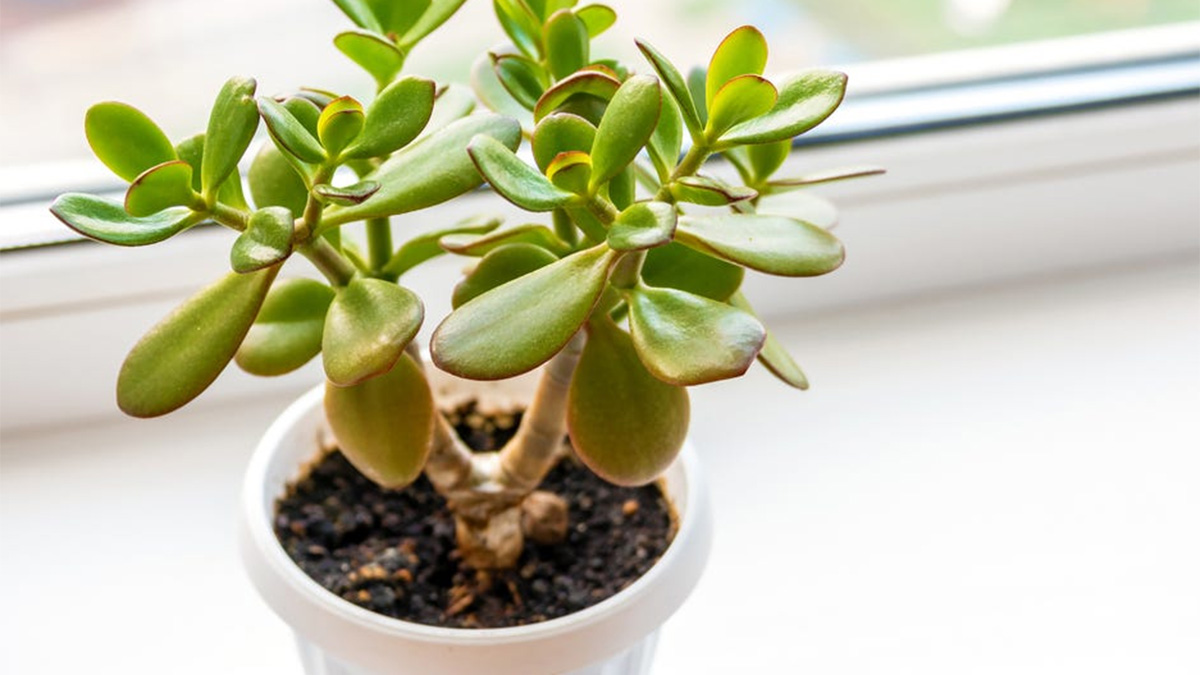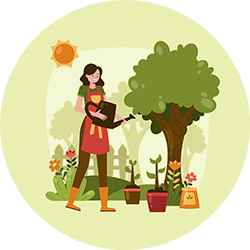Best Practices for Growing Jade Plants (Indoors and Outdoors)

Jade plants are one of the easiest and most rewarding succulents to grow, whether you keep them on a sunny windowsill or let them thrive outdoors in warm weather. With their thick, glossy leaves and forgiving nature, they’re ideal for both beginners and experienced gardeners alike. This guide shares the best practices for keeping your jade plant healthy year-round, no matter where you grow it.
Understanding jade plants
What is a jade plant?
The jade plant (Crassula ovata) is a popular succulent known for its thick, fleshy leaves and tree-like shape. Native to South Africa, it has become a common choice for houseplant enthusiasts due to its low maintenance and attractive appearance. Mature jade plants can grow several feet tall and live for decades with proper care.
Why they’re great for both indoors and outdoors
Jade plants are highly adaptable and can thrive in both indoor containers and outdoor gardens. Their drought tolerance, compact size, and slow growth make them well-suited for small spaces. They also respond well to pruning and shaping, which allows for creative display in pots, patios, or garden beds.
Choosing the right location
Indoor placement tips
Indoors, jade plants prefer a spot with plenty of natural light, ideally near a south- or west-facing window. Avoid placing them near heating vents or cold drafts, which can stress the plant. If natural light is limited, consider supplementing with a grow light to maintain healthy foliage.
Outdoor placement tips
When grown outdoors, jade plants do best in areas with bright light and some protection from the harsh afternoon sun. They thrive on patios, porches, or in raised beds where water drains easily. In colder climates, they should be brought indoors before nighttime temperatures drop below 50°F.
Light requirements
Jade plants need around four to six hours of bright light per day to maintain their compact shape and vibrant color. Indoors, this means placing them in the sunniest window available. Outdoors, partial to full sun exposure is ideal, though young plants may benefit from filtered light during the hottest part of the day.
Signs of too little light include leggy growth, faded leaves, and slow development. Too much direct sun, especially in hot climates, can cause leaf burn. Monitor the plant’s response and adjust placement as needed.
Watering best practices
Indoor watering
Indoors, jade plants should be watered only when the top inch or two of soil feels dry. Use room-temperature water and allow it to drain fully from the pot. Never let the plant sit in standing water, as this can quickly lead to root rot.
Outdoor watering
Outdoor jade plants typically need more frequent watering, especially during hot, dry spells. However, overwatering is still a concern, particularly in containers or poorly draining soil. Always let the soil dry out between waterings and reduce frequency during cooler months.
Soil and potting
Jade plants require a fast-draining soil mix to avoid root rot. A commercial cactus or succulent mix works well, or you can create your own by combining potting soil with sand or perlite. Avoid using standard potting soil alone, as it holds too much moisture.
Choose a pot with a drainage hole to allow excess water to escape. Clay pots are a good option since they help wick away moisture from the roots. Repot every two to three years, or when the plant becomes root-bound.
Fertilizing jade plants
Fertilize jade plants during their active growing season, typically from spring through early fall. A diluted, balanced liquid fertilizer works well once a month. Avoid feeding in winter when the plant is dormant, as this can lead to weak, leggy growth.
Too much fertilizer can damage the roots and cause leaf drop. Always follow the label instructions and err on the side of underfeeding rather than overfeeding.
Temperature and humidity considerations
Ideal temperature range
Jade plants grow best in temperatures between 65 and 75°F during the day, with a slight drop at night. They can tolerate short periods of heat or cold, but prolonged exposure to freezing temperatures will damage or kill the plant. In zones where frost is common, jade plants should be moved indoors or into a protected space before cold weather sets in.
Humidity levels
Low to moderate humidity levels are ideal for jade plants. High humidity can increase the risk of fungal diseases or rot, especially in poorly ventilated spaces. If growing indoors, ensure good air circulation and avoid misting the leaves.
Seasonal care and transitions
When temperatures begin to cool in the fall, prepare to bring outdoor jade plants inside. Acclimate them gradually by moving them to a shaded area for a few days before bringing them indoors. This helps reduce shock and keeps the plant healthy through the transition.
In spring, wait until nighttime temperatures consistently stay above 50°F before moving the plant back outside. Slowly reintroduce it to direct sunlight over the course of a week to prevent sunburn. Trim any dead or damaged leaves to encourage new growth during the warmer months.
Common problems and how to avoid them
Overwatering
This is the most common issue jade plant owners encounter. Signs include yellowing leaves, soft stems, and root rot. Always allow the soil to dry out completely between waterings, and ensure the pot has good drainage.
Underwatering
Wrinkled or shriveled leaves indicate the plant is dehydrated and using up its stored moisture. While jade plants are drought-tolerant, they still require consistent watering during the active growing season.
Poor light conditions
Insufficient light can lead to leggy growth and weak stems as the plant stretches toward a light source. Place your jade plant in a spot with several hours of bright, indirect sunlight each day.
Sudden environmental changes
Rapid shifts in temperature, light, or airflow can cause leaf drop. Keep the plant away from drafts, heaters, and air conditioners, and try not to move it frequently.
Pests
Mealybugs and spider mites are the most common pests affecting jade plants. Mealybugs appear as white cottony clumps, while spider mites leave tiny webs and leaf speckling. Use insecticidal soap or wipe the leaves with rubbing alcohol to control infestations.
Fungal problems
Soft spots, black lesions, or mushy leaves can signal fungal infections, especially in humid conditions or when foliage stays wet. Improve air circulation and avoid watering the leaves directly.
Salt buildup
Over time, minerals from tap water or fertilizer can accumulate in the soil, leading to browning leaf edges or stunted growth. Use filtered or distilled water when possible and flush the soil occasionally to remove excess salts.
Conclusion
With the right care, jade plants can live for decades and become a standout feature in any space. By following these simple practices for watering, light, temperature, and soil, you’ll be giving your plant the best chance to thrive. Take the time to observe its needs, adjust as the seasons change, and enjoy the beauty of a truly low-maintenance plant.
